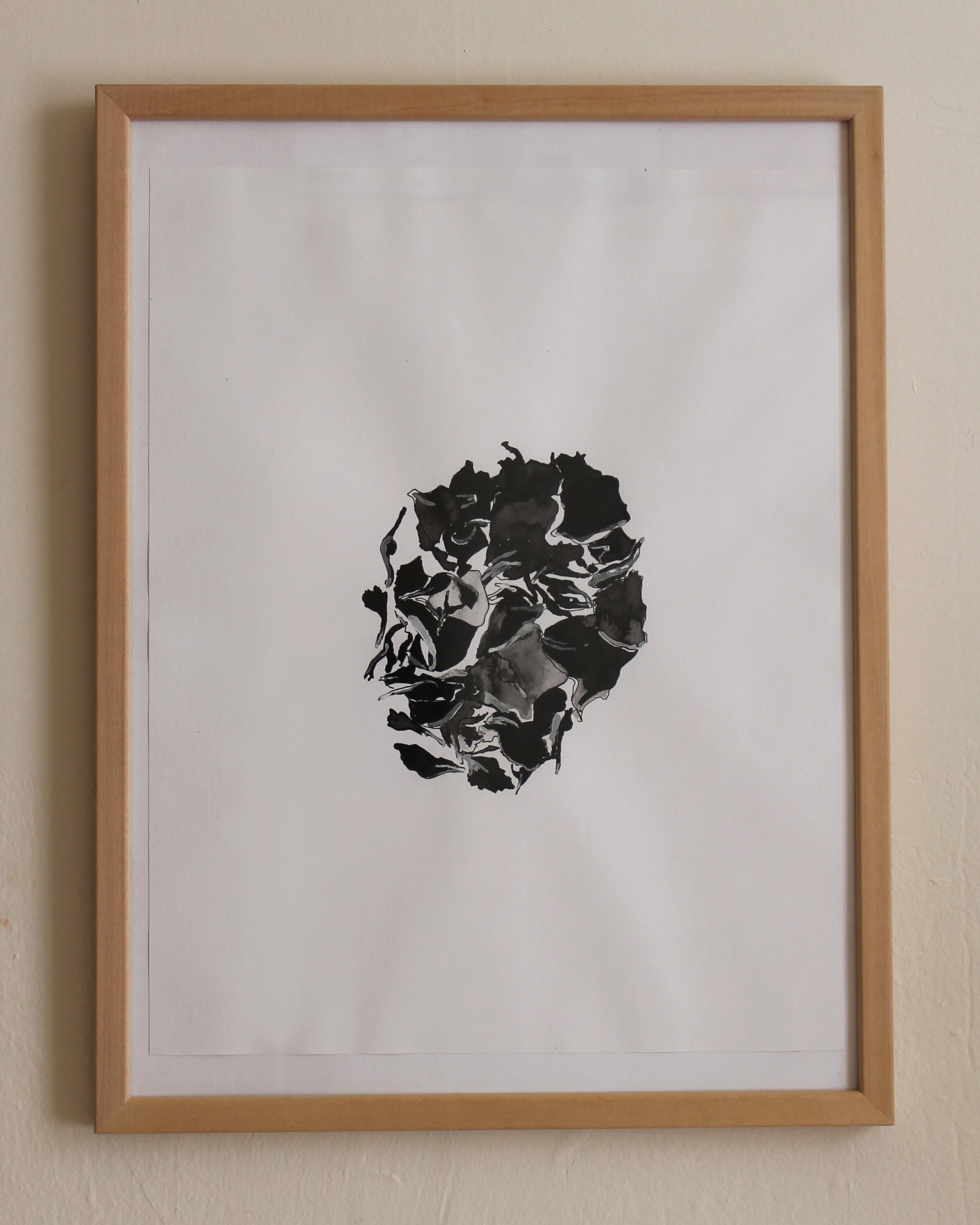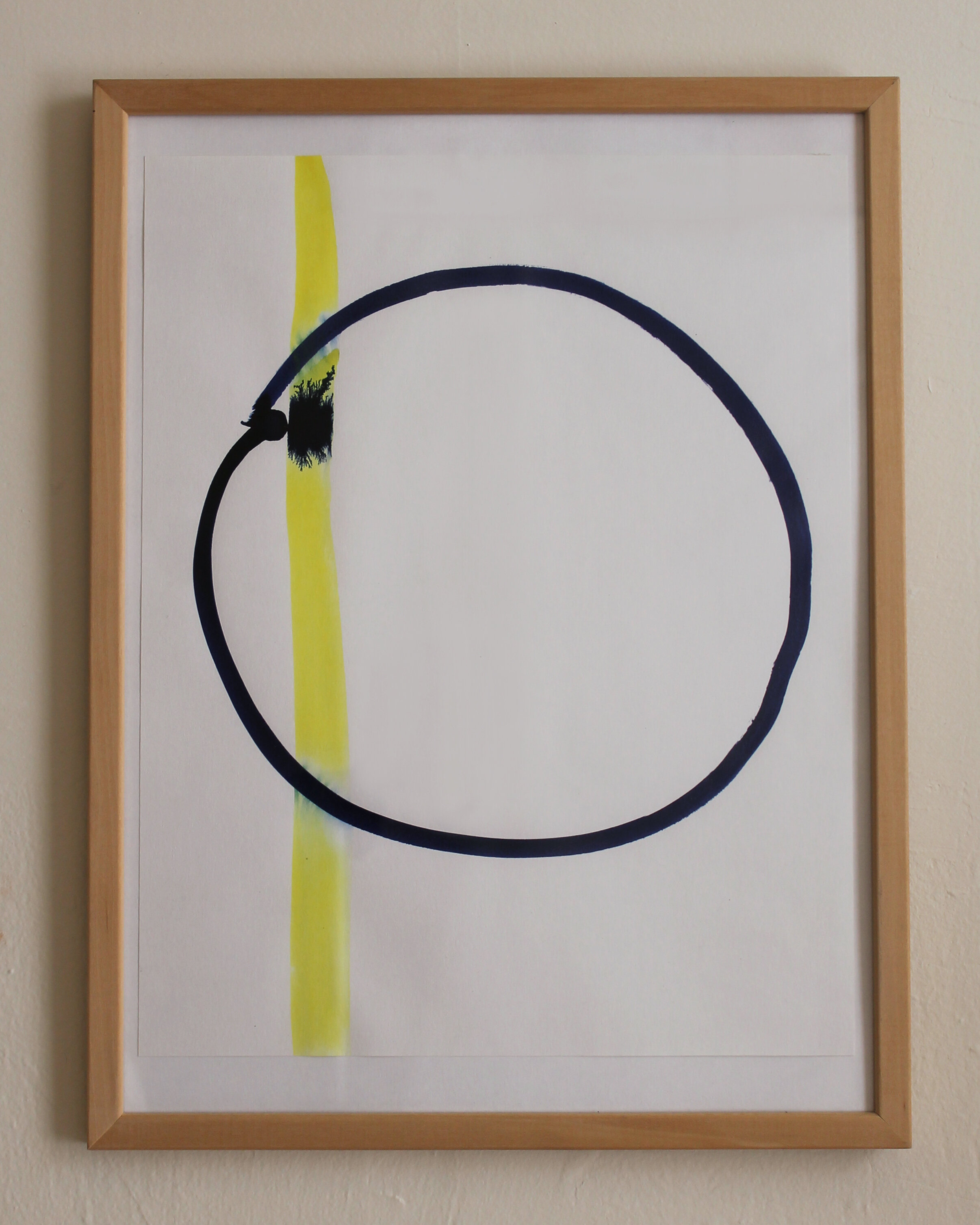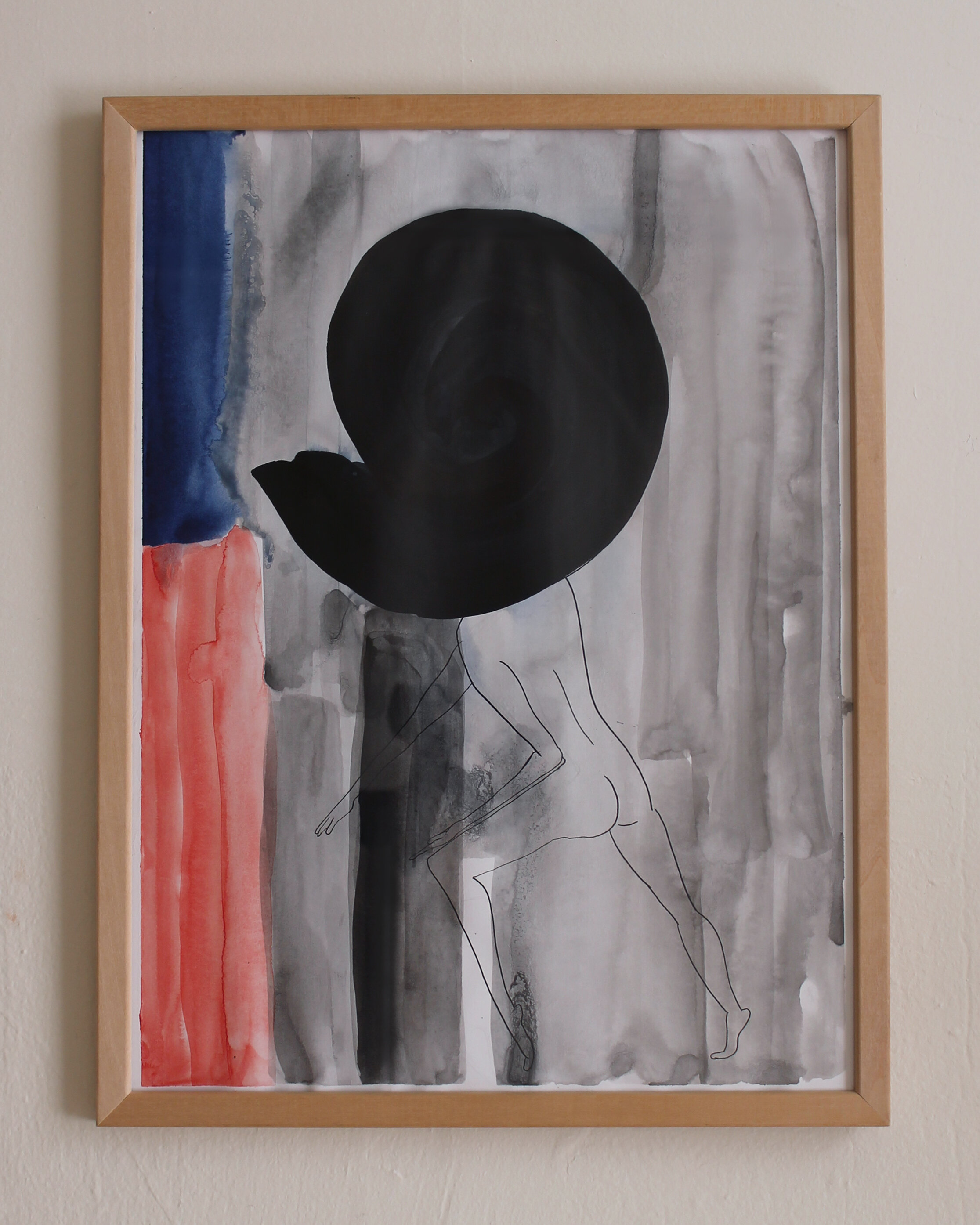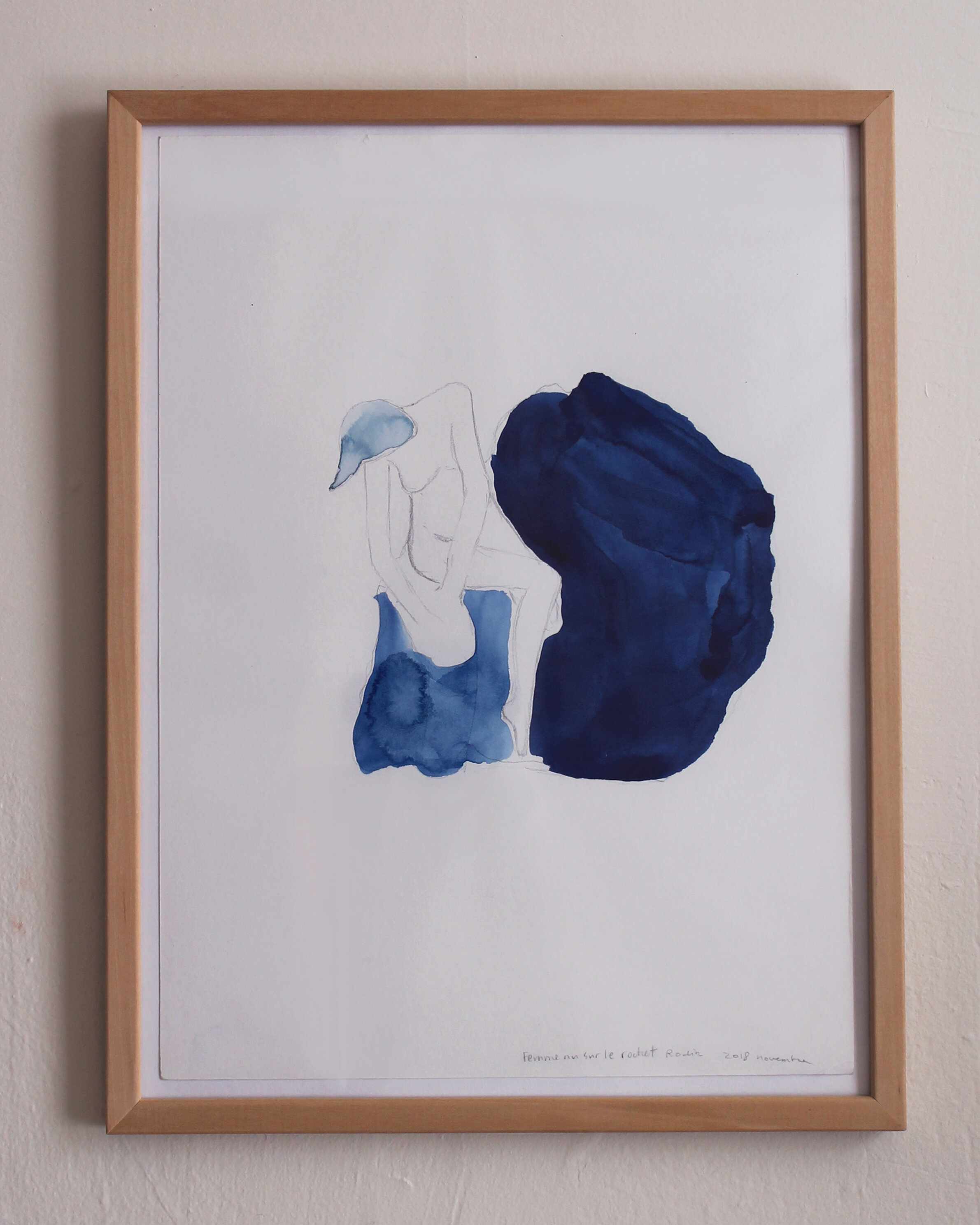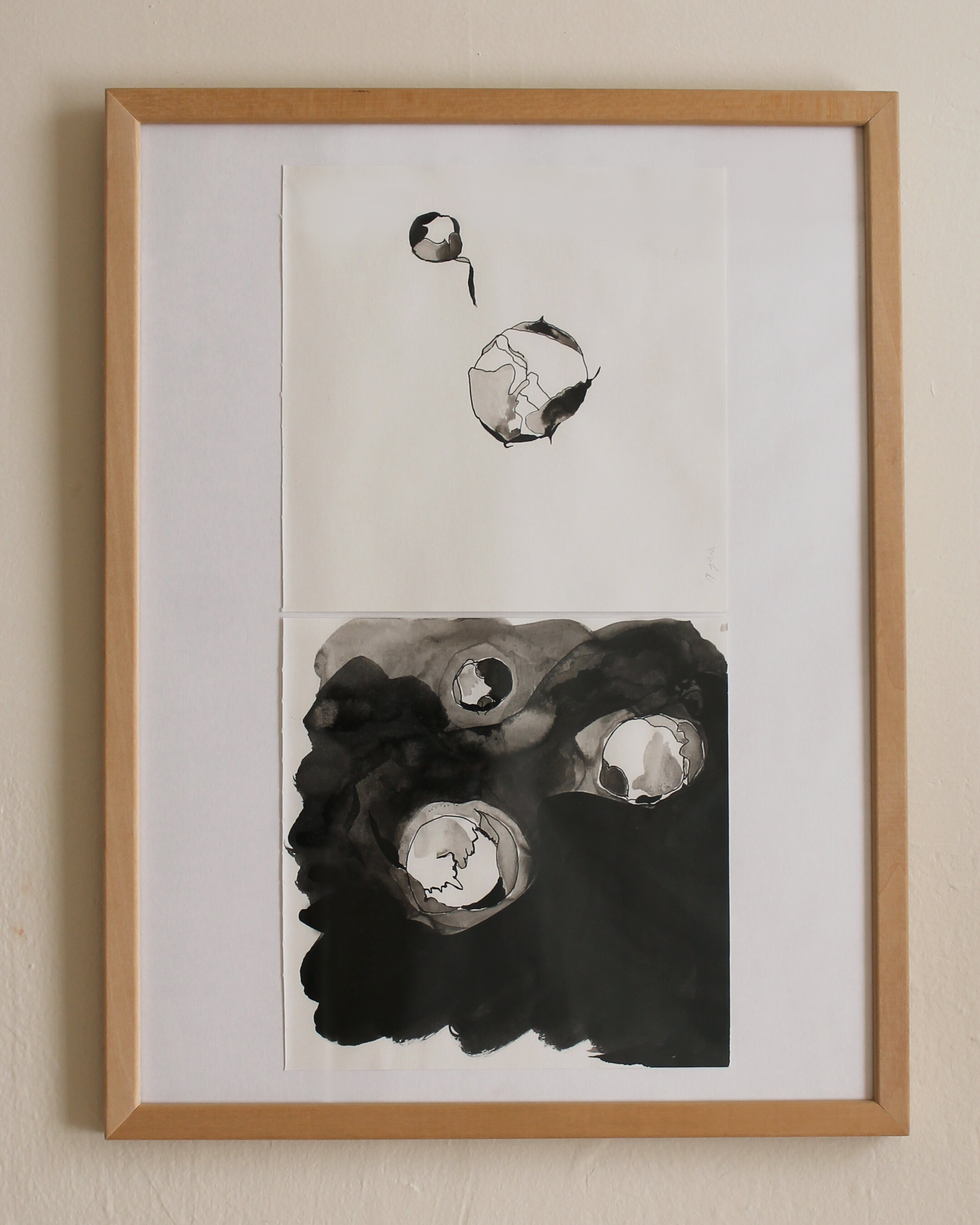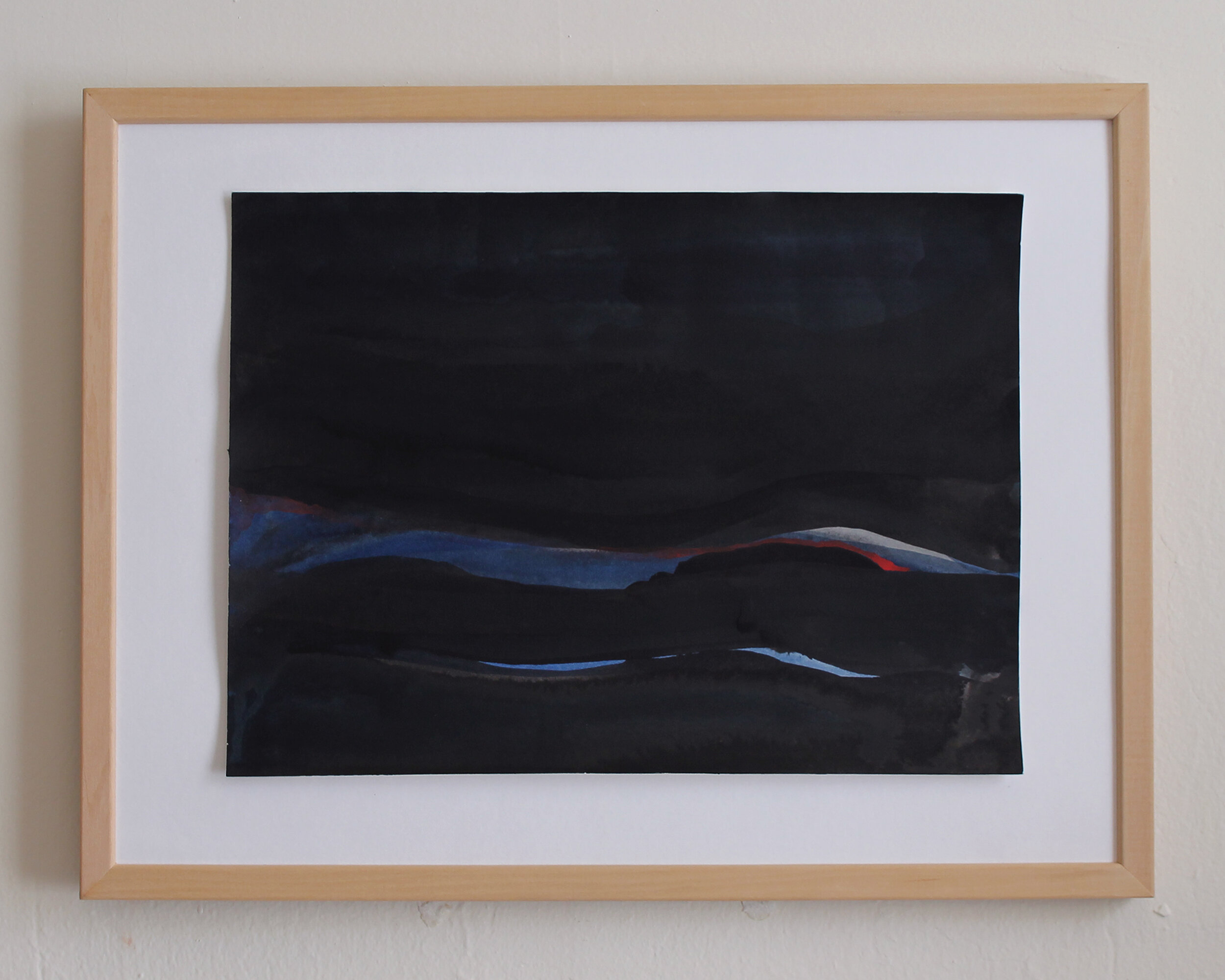Figure Void to Lithic Landscapes
By Beau Bree Rhee, Christophe Kihm, and Alison Burstein, Curator, Media and Engagement
On September 22, 2020, The Kitchen published a Video Viewing Room featuring a performance recording of Beau Bree Rhee’s work Performance Paysage (translation Performance as Landscape) (2020) alongside images and a new artist’s text. This presentation was, in part, an act of reflection—a looking back on and a re-processing of a performance from the recent past. Through the prism of the trying and tumultuous months between when the performance took place in March and when the recording was released online in September, Performance Paysage took on a dual resonance as both a foreshadowing of our present moment and a document of a prior form of performance in shared physical space. The content of the work underscores this duality: through its movement and poetry, this performance meditates on what it means to be human in the current epoch, the Anthropocene, even as it probes societal and ecological patterns dating back to ancient times.
With the aim of further animating Performance Paysage’s multilayered temporality, Rhee envisioned a second element that would complement the Video Viewing Room—a postscript that is also a beginning in its own right. We began to discuss how it might be possible to explore the work’s relationship to our current moment, with an eye toward the unfolding uncertainties of the near future. As Rhee and I spoke about the ways that she has continued her studio practice throughout this period, it became clear that the way forward was also a looping back onto the many strands of Rhee’s body of work that run through and beyond this one performance.
While various ideas ebbed and flowed in our conversations, it was her drawings that emerged as the most direct through-line. The images and words selected and aggregated on this page give a glimpse into Rhee’s ongoing exploration of themes that are present in Performance Paysage. Recurring throughout is a mapping of how the human figure, the body, intersects with or positions itself within landscapes and orbits, both earthly and celestial. This act of charting what Rhee calls “body-space” takes shape in many forms in her work—drawing, poetry, choreography—and often involves in-person collaborations with other practitioners. In the face of current limitations on gatherings, Rhee has taken up other modes for “radical dependency,” including by making a garden plot an active site for working in and with natural, non-human elements and by initiating exchanges via post with local and distant interlocutors.
Falling on the winter solstice, the publication date for this piece marks the end of the astronomical season that began on the fall equinox, September 22, 2020, and the beginning of the next. Synced with this inflection point of the earth’s orbit, this new presentation of Rhee’s work underscores the cyclical nature of marking and making across the artist’s practice.
Alison Burstein
I have this image, or I keep imagining a very long hallway, narrow and dim, with art hung at the very end. Lithic landscapes, inconsolably deep submersion, light and atmosphere—they dance through this art, or perhaps it is a window… looking out onto this dancing land. Inside, a stillness, receding into shadows.
1 december 2020
I turn to landscape, to geography,
to monolith, to volcano
to earthquake, to canyon
to make form of these
shifting layers upon layers of life
infinitely dense
of land of soil of memory
of bloom of decay of touch
of tears of abundance of loss
of joy of sorrow of torment
of toil of dreams of hunger
The time known by a humble seed, edified & edifying
the geologic
the lithic
strata
sediment
each year an infinitesimal millimeter
spread upon the grandeur of the
humming youthful earth groaning
Oh groaning time muffled by haste
Let my fingers linger & trace the
arborescence of each day
each hour each moon
The time known by a humble seed
we make a monument to love
23 march 2020 NYC
Beau Bree Rhee
S’orienter
Orientation precedes movement. To orient oneself is to direct a movement, without necessarily having to correspond to a destination. In ethology, the distinction that is established between orientation and navigation highlights the absence of a precondition for orientation, while navigation strictly depends on the choice of a goal. We could consider, therefore, that orientation is not the contrary to getting lost. Perhaps, even, the actions of getting lost and finding one’s way are both folded into the act of orientation.
In one of the numerous ramifications he dedicated to his Umwelt theory, the biologist Jakob Von Uexküll affirms that “the animals cut out the vital circle which suits them in the same way that we cut out figures on a sheet of paper.” Like a tailor, the organism measures-to-order a pattern cut from the fabric of the world, which is always adjusted to itself.
A body is defined by its powers and what might affect it, through the actions and relationships that it composes with its environment. The unity of a living being is not found necessarily within the organism itself nor is it hidden within its nervous system. Rather, this unity is affirmed in the way a living being performs relationships of meaning by interacting with those near and far.
The body transports its own system of coordinates which privileges its orientation. Shifted by its own movements, this system can replay its dimensions in new significations and new performances, which augment the boundaries directed by the organism in its surroundings and extend its Umwelt. The plasticity of these relations also belongs in the realm of orientation.
Christophe Kihm
This text can be found in its original language, French, here.
Studio desk. Correspondence and contributions from: Anne Patterson, Sugar Vendil, Laurent Schmid, Marion Tampon-Lajarriette, Patrick Bayly, and Jeremy Toussaint-Baptiste. Contributions also from collected pollen of peonies, mollusks, algae.
List of works:
[1] Decay juillet, 2020. Ink & gouache on paper, 11.75x14.5in.
[2] Dot orbit line, 2019. n°9 of 25 in the Dot-orbit series. Ink on paper, 11x14in.
[3] Self portrait (Figure mollusk), 2020. Ink & gouache on paper, 11.8x15.75in.
[4] Brûlée burnt (atmosphère paysage octobre), 2020. Ink & gouache on paper, 11.8x15.75in.
[5] Figure void (femme nu sur le rochet), 2018–2019. Ink & pencil on paper, 11x15in.
[6] Plantes planètes (juin), 2020. Ink on paper, 7x7in each.
[7] Night, fire next time (septembre), 2020. Ink & gouache on arches cotton paper, 9x12in.
Beau Bree Rhee is a visual artist & choreographer based in New York. Drawing and performance are her primary forms, but additionally text/poetry, installation/sculpture, scent, scores. She is synesthetic and grew up tri-lingual/cultural (Korean-English-French). She is invested in multi-modal work & collaborations spanning environmental/ecological science, philosophy, cosmology, performance, visual art.
She has exhibited & performed her work internationally at KW Institute for Contemporary Art/Berlin Biennale; Bard Graduate Center Gallery NY; Daniels Gallery University of Toronto; Kaaitheater Bruxelles; Baryshnikov Arts Center NY; MoMA/PS1 NY; among others. Her work was included in the exhibition Predicated. at The Kitchen in 2018. Her work is held in private collections as well as the MoMA Library & Research Collection. She teaches at Parsons School of Design. She holds degrees from Haute école d’art de design HEAD-Genève (MFA) & Columbia University (BA).
Christophe Kihm is an art critic, professor at the Geneva University of Art and Design (Haute école d’art et design HEAD-Genève) and independent curator. The text included here was written to accompany Rhee’s drawings & scores in Strange Attractors, a curatorial & publication project in the 10th Berlin Biennial in 2018.
Kihm has written and critiqued widely on the visual arts; action/performative arts; science and art modalities; methods of transmission; and teaching. Kihm is the author of numerous books, articles and essays published by artpress, Bayard, Presses du réel, among others. He is the main researcher for the “Habiter l’espace extraterrestre” research programme (2019–2021), conducted in partnership with the CNES (Centre national d’études spatiales, Paris) and subsidized by the FNS (Fonds national suisse de la recherche scientifique).
Alison Burstein is Curator of Media and Engagement at The Kitchen.

